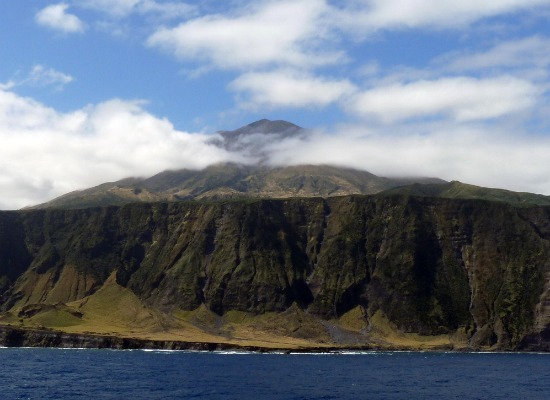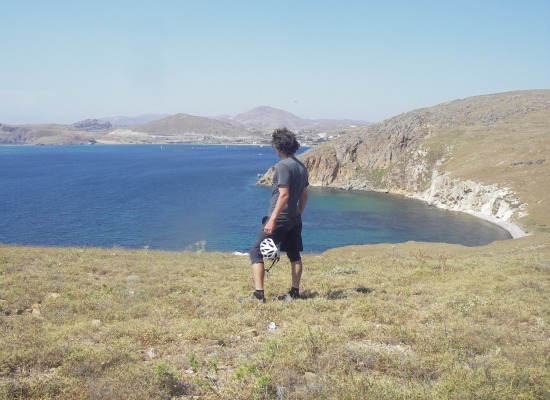Seven Islands to Visit in 2012
Pitcairn Island is populated by 50 people, has a handful of hostels, a general store and a café and, frankly, could really use a few visitors
/https://tf-cmsv2-smithsonianmag-media.s3.amazonaws.com/filer/PitcairnIslandSMALL.jpg)
Planning a vacation for next year? Consider these remote island getaways. They could really use a visit.
1) Pitcairn Island. The history of this island is one of the most compelling stories in nonfiction, recounted in the book trilogy of Mutiny on the Bounty, Men Against the Sea and Pitcairn’s Island. The two-square-mile subtropical crag was unoccupied until a boatload of mutinous Englishmen showed up in 1790, sank their ship off the island’s coast and piled ashore, along with a number of ladyfriends picked up in Fiji and other islands along the way. The mutineers had sent Lieutenant William Bligh and 18 loyal sailors adrift in a flimsy lifeboat after taking control of Bligh’s ship, HMS Bounty. They brought to life a true Lord-of-the-Flies scenario to the island as they learned to survive, descended into drunken infighting and began killing each other. By 1800 the only sailor left was John Adams, whose life assumed a peaceful pace with his Polynesian companions. Today, Pitcairn Island is populated by 50 people, has administrative headquarters in New Zealand, markets honey, stamps and coins as its chief products, has a handful of hostels, a general store and a café, and frankly, it could use some company.
2) Nunivak Island. I probably don’t need to warn anyone to stay away from this desolate island patch of Alaskan tundra until May or June. It’s then that the sun comes out and stays out over Nunivak Island, located in the Bering Sea at 60 degrees latitude north. About 200 people, almost all residents of the Cup’ik Eskimo town of Mekoryuk, live here, hunting seals and fishing for a living. Musk ox and reindeer also occupy the island, introduced after the native caribou were exterminated, and the streams teem with salmon. Don’t expect much in the way of accommodations here, and bring a waterproof tent if you go. Flights come regularly from Bethel, Alaska. The virtues of this island are its isolation, its wilderness, its bounties of wild fish, blueberries and game and, in the absence of tourist infrastructure, the prospects for true adventures and interactions with local people and culture.
3) Isla Angel de la Guarda. If there is an island in the ocean but no one there to enjoy it, does it really exist? Sure. Consider Isla Angel de la Guarda, in the Mexico’s Sea of Cortez. At any given time, almost nobody is there—but satellite photos show that the island itself always remains. This 40-by-10-mile wilderness, with the stoic silence of the desert, is surrounded by sapphire-blue water. Without hotels, villages or tourist attractions of any sort where one might spend money, it doesn’t really need visitors—and that’s the best reason to go. If you should find yourself there somehow (you’ll have to hitchhike out via fishing boat), stand on the beach at night and gaze at the night skies bejeweled with stars, and by day soak in the clear ocean waters. Bring plenty of water (or a desalinator), and take along a fishing rod. Leave only footprints.
4) Tokelau. Poverty, idleness, the despondency of being marooned—these aspects of life on Tokelau are nothing compared to what’s coming for this triangle of islands. Lying smack on a straight line between Auckland and Honolulu, the islands of Atafu, Nukunonu and Fakaofo, made of sand and crumbled coral, stand no more than two meters above sea level. With sea level rising already, the Tokelauan archipelago may not see another century of life above water. For the time being, this territory of New Zealand is home to 1500 people and, reportedly, three cars. (I have not learned where people go in them.) There is no landing strip, and the fastest way to Tokelau is a two-day boat ride from Samoa. Representatives of Tokelau recently made a stir in Durban, at the November-December climate change summit, where they announced an ambitious plan to switch entirely to renewable energy within a year. Their idea is to challenge the rest of us to take similar action. If you go to Tokelau, expect to eat breadfruit, tuna, taro root and kaleva, a local alcohol made from coconut.

The rugged shores and soaring peak of Tristan da Cunha, home to the world's most isolated community.
5) Frank Sinatra preferred New York City. I prefer places like Tristan da Cunha, famed as the most remote inhabited island group in the world. This Atlantic cluster of volcanoes lies 1,750 miles from the nearest port, Cape Town, South Africa. The six islands take up 52 square miles of the Earth’s surface and provide a home to just under 300 people. Tristan da Cunha Island itself sports a dramatic summit that rises 6,762 feet from the sea—a perfect conical peak with a heck of a hike to the top. In other words, sea level won’t swamp this island group and you’ve got all the time in the world to go see it—but how does one get there? Like Tokelau, “Tristan” has no airport, and the only way here is by boat, whether fishing vessel, freighter or private sailing yacht. Camping, meanwhile, is reportedly not illegal but is considered unusual. The other islands in the group are uninhabited, though, and presumably you can sleep any place you want. One of these islands is actually called Inaccessible Island—which sounds to me like a challenge. Note: Tristan is not tropical. It lies at almost 40 degrees south latitude. Better bring a coat.
6) Lemnos. This Greek Aegean island is a personal favorite of mine—a lesser-known expanse of low hills and untrammeled beaches that I visited in 2006 and which I remember most for its abandoned villages, desolate plains, beehives everywhere and a mind-blowing abundance of fig and mulberry trees. Homer praised Lemnos in the Iliad for its wine, and today its scrubby 186 square miles still produce a variety of acclaimed wines. Myrina is the main western port, served by multiple ferry lines and with all the hotels and services a tourist might want. But Lemnos’s east side, relatively deserted, is where the magic happens. Camp where you like. Savor the stars at night. Eat figs by day. Revel in the rare solitude. While you’re in the area, Samothraki to the north is a beautiful mile-high volcanic island populated by camps of Central European hippies known for their trance parties and well worth a visit, while Chios, just a ferry ride to the south, is another mountainous beauty of the Aegean.
7) Caroline Atoll. Want a real party this New Year’s Eve? Then go to New York City. But at the eastern edge of the Kiribati island group you’ll find the Caroline Atoll, whose proximity to the international dateline makes it among the first places in the world to see each new day on Earth. Go here in a week and enjoy the distinguishing thrill of being the first person to enter 2012. In fact, Caroline Atoll’s name unofficially became “Millennium Island” prior to the “Y2K” New Year’s celebration. But in the realm of more relevant and real tourist attractions, visitors here will find virtually no people, as the Caroline Atoll is uninhabited. Sleep where you will—and bring a mask and snorkel, for the coral reefs here are considered among the most spectacular in the world. Watch for giant clams underwater, grab a lobster for dinner and good luck keeping the coconut crabs out of your tent at night.
Last Note: If you plan to be marooned somewhere for some time, that’s great. I’m glad for you. I wish I was going, too. Just be sure to bring along a copy of David Quammen’s The Song of the Dodo: Island Biogeography in an Age of Extinctions, in which the author-naturalist discusses, through fascinating examples and cases studies, just why the creatures that inhabit islands—from the largest lizard on Earth to flightless birds that have no fear of predators to grotesquely oversized tortoises—can be, well, such freaks.
/https://tf-cmsv2-smithsonianmag-media.s3.amazonaws.com/accounts/headshot/Off-Road-alastair-bland-240.jpg)

/https://tf-cmsv2-smithsonianmag-media.s3.amazonaws.com/accounts/headshot/Off-Road-alastair-bland-240.jpg)